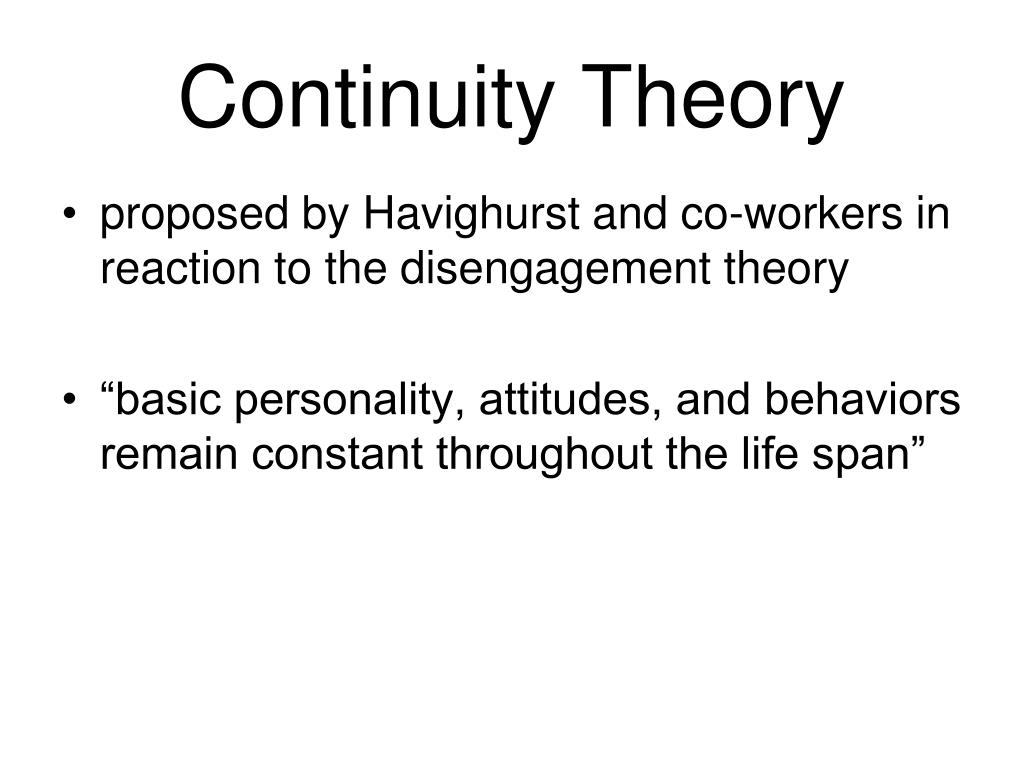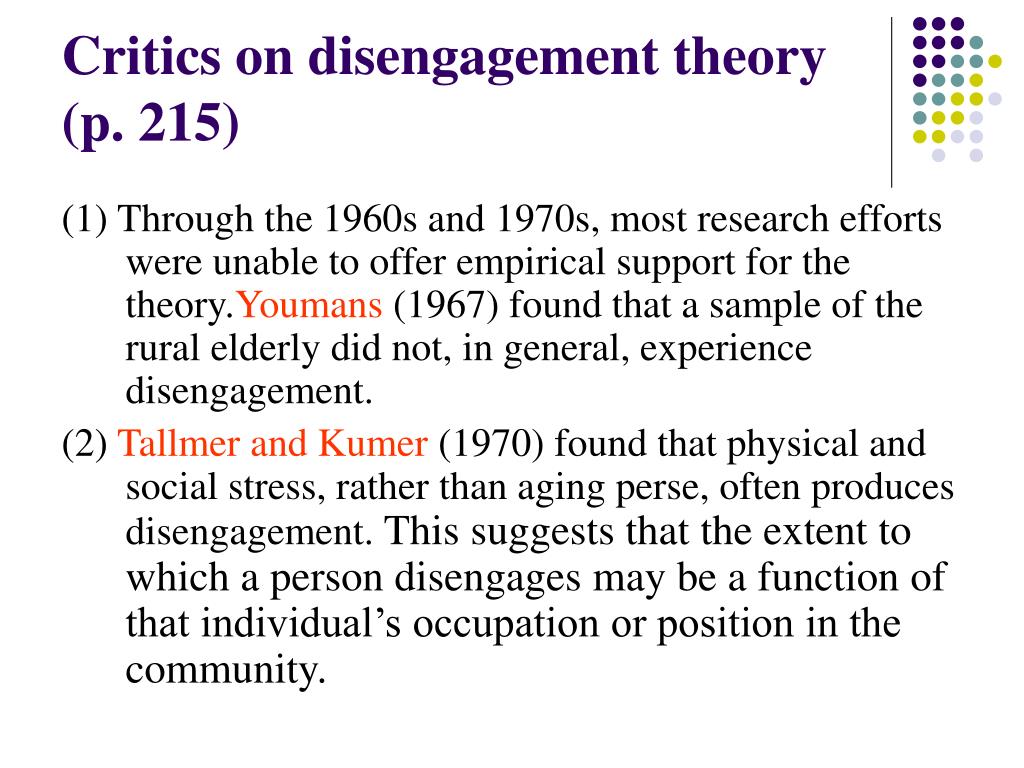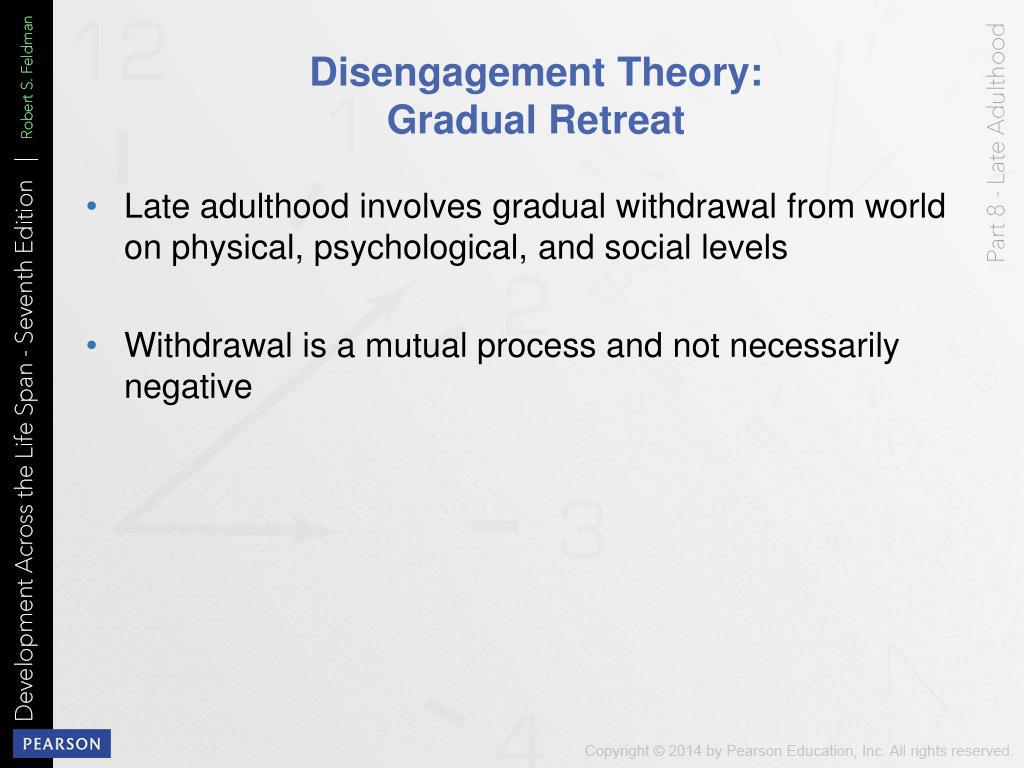
One of the shortfalls that skeptics cite in their attempt to disregard the theory is that it overlooks certain problems that emerge during the old age stage of life. However, while the theory is deemed successful in challenging the disengagement perspective, it also faces criticisms. It is worth noting that various perspectives of productive and successful aging that were generated from this theory have been criticized for various reasons (Arkowitz, 2008). The society is more stable, secure, and satisfying when the elderly persons are given a chance to enjoy their lives just like other members of society. Happiness is considered the ultimate goal of every person living in his or her latest age. To the proponents of this theory, people in their old age must be encouraged to stay active, repeat their life-long habits such as dancing, and/or create positive relationships with the society and people around them. For instance, it recognizes that old age comes with numerous socio-emotional and physical challenges that one can only address if he or she takes a positive view (Arkowitz, 2008). For one to be satisfied with his or her late life, he or she needs to create a working and healthy social system.īesides, the theory takes a rather psychological perspective in addressing some of the issues that face the elderly people. The theory postulates that strong and healthy relationships among elderly persons are beneficial in the establishment of stability in society. While contrasting disengagement theory, this viewpoint posits that aging people tend to form healthy relationships, which keep them vigorous and functional. One of the significant theories to have responded to the disengagement perspective is the activity theory.

Given that disengagement theory was the first sociological perspective to explain aging, other theorists came up to respond to the argument is expressed. The disjunction may also bring other problems such as identity crisis among others. Failure by either the society or the people changing to alter their lifestyle by assuming new roles may lead to several physical, psychological, and social problems, including dementia. However, the disengaged person must be able to adopt the new social roles for the process to be successful. From a sociological point of view, total disentanglement takes place when the person going through the change and the community are prepared to face it.

Simultaneously, the theory believes that younger adults are socially prepared to take on the roles of those who hit the detachment stage. The process is spurred by the aging people’s unwillingness to maintain their social reputation amid these changes. As this happens, they begin to lose touch with social norms, a situation that deteriorates their life in isolation.Īs the theory reveals, throughout the process, gender roles assume the center stage of the isolation and disintegration with social norms.

They begin to live a life of isolation, which implies that they disengage with intimate or non-intimate relations (Silverstein, Bengtson, Putnam, Putney, & Gans, 2008). One of the assumptions is that as people approach old age, they tend to lose social ties apparently due to their anticipation of death.

The findings from the group of researchers were used to create nine assumptions about aging. This longitudinal study traced the life changes observed among hundreds of people, as they moved from middle age to old age. It is imperative to note that the data that was used to formulate this theory was generated from a study in Kansas City (First, Frances, & Pincus, 2015). In this theory, it is believed that aging is an inevitable mutual withdrawal from the social system by a person. Proponents of the theory, Elaine Cumming and William Henry take the psychosocial perspective in explaining the unhealthy collective relationships the aging person’s experience in the latest phases of their lives (Comer, 2015). The disengagement theory posits that aging is a process that extricates people from the social world.


 0 kommentar(er)
0 kommentar(er)
